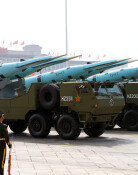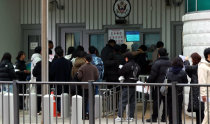New Mechanism Found to Stop Cancer Cell Transfer
New Mechanism Found to Stop Cancer Cell Transfer
Posted April. 13, 2005 23:15,
For the first time in history, Korean researchers have identified a mechanism that controls the transfer of cancer cells. A research team led by Pak Sung-hee (age 35, female) of the bioengineering department of Seoul National University said on April 13, The gene named KAI1 has been proven to stop the transfer of cancer cells based on animal testing and research on cancer cells of human beings.
The Ministry of Health and Welfares project named, Treatment and Research on Cancer had its findings published in the British science journal, Nature on April 14.
The KAI1 cancer gene, first found in 1996, was presumed to intervene in the controlling process of cancer cells, but there was no specific mechanism discovered then. In most cases, the survival rate surpasses 90 percent if cancer is discovered in its early stages. However, once it is transferred to other organs, this rate drops considerably.
From late 2003 up until recently, the research team has been conducting experiments. Guinea pigs were divided into two groups: in group A, prostate gland cancer cells with KAI1 were injected, while in group B, cells without KAL1 were prepared. After three to six months, it was determined whether or not there had been any transfer to the lungs. It was discovered that for group B, cancer was transferred to the lungs, but for group A, there was hardly any transfer.
The research team also conducted the same experiment on the prostate cancer cells of human beings, and this time they paid additional attention to whether or not proteins named Tip60 and Beta-catenin intervened in the cancer cell transfer. If a new anti-cancer medicine is launched in the market with this mechanism applied, then it is expected that the survival rate for cancer patients, currently at 50 to 60 percent, could be raised up to the range of 90 percent.
Professor Pak said, There should be additional research on other cancer cells, and it is too early to conduct related clinical experiments on it right away. adding, But if there is a greater chance to stop cancer transfer, it will hopefully help cure cancer.
Sang-Hoon Kim corekim@donga.com



![화장실 갇혔을 때 생존법…“최후에는 변기뚜껑” [알쓸톡]](https://dimg.donga.com/c/138/175/90/1/wps/NEWS/IMAGE/2025/12/26/133042007.3.png)


![보일러 풀가동해도 춥다?…난방비 폭탄 범인은 ‘이것’ [알쓸톡]](https://dimg.donga.com/c/138/175/90/1/wps/NEWS/IMAGE/2025/12/24/133029046.3.png)
